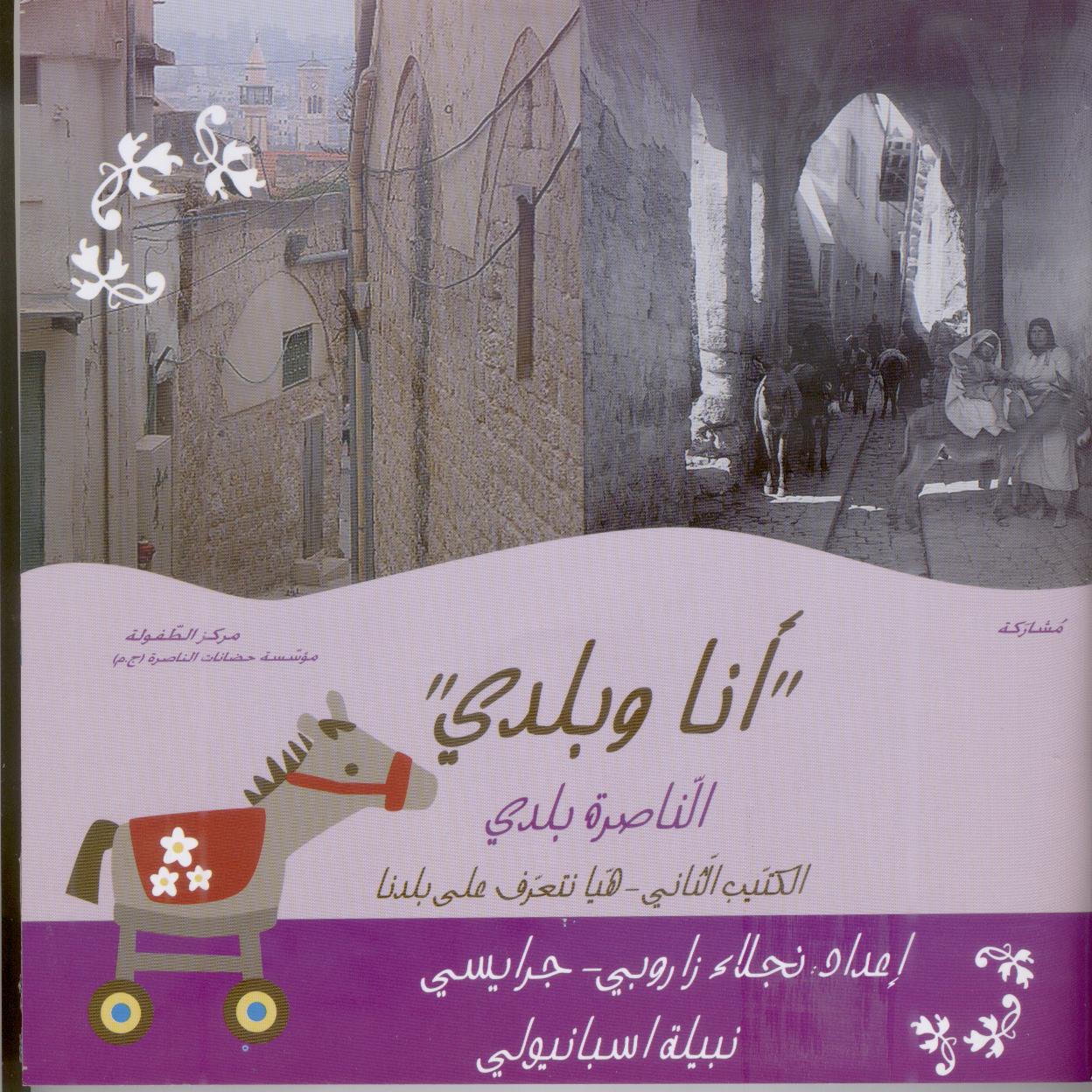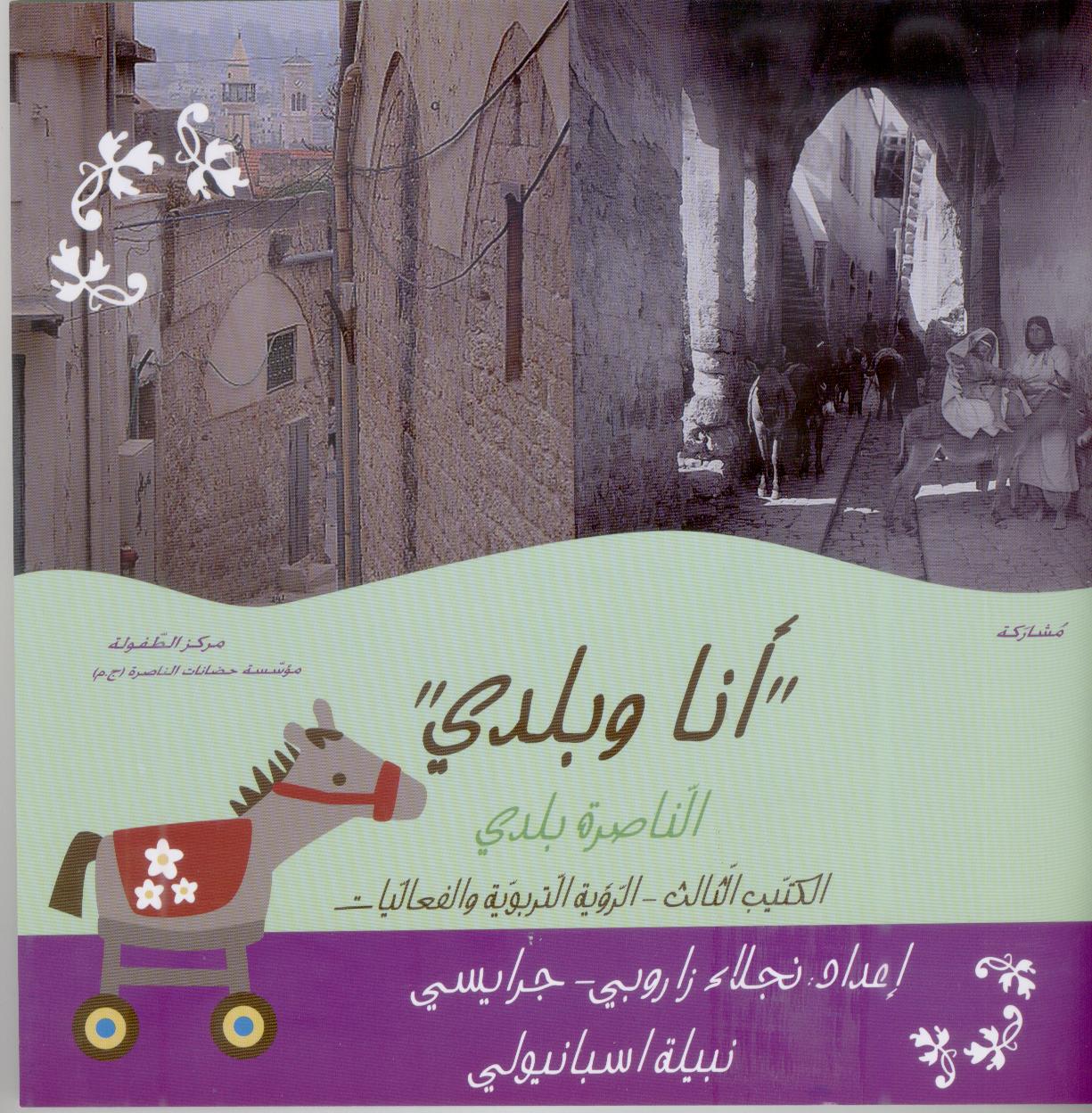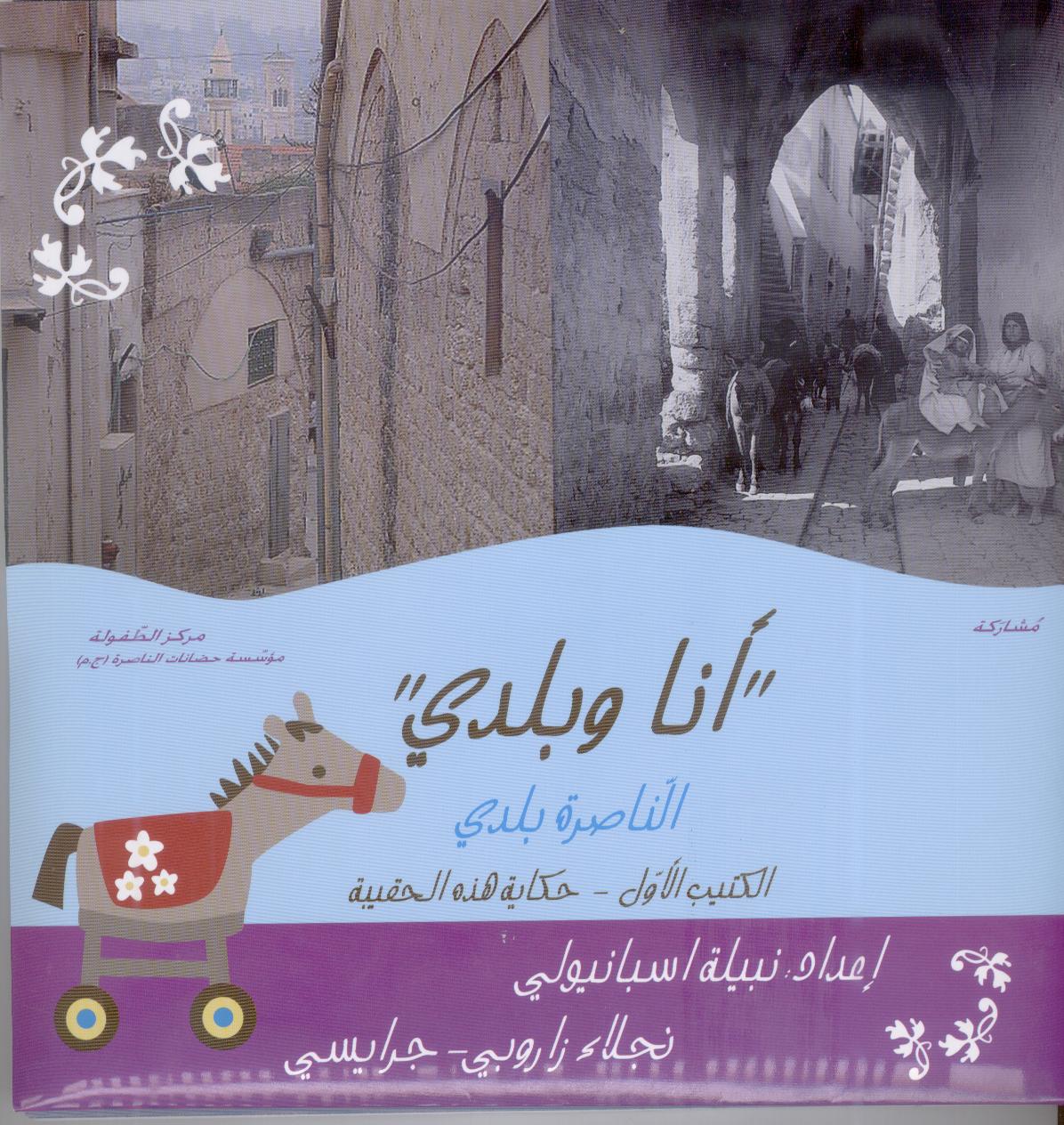Developing Culturally Relevant Resources for ECCD - Action Oriented Approach
Nabila Espanioly
Introduction
In the last few years, there has been a remarkable progress in the field of early childhood, an increased concern and awareness for children and childhood in general and the importance of early childhood in particular as it concerns cerebral development. Therefore the field of early childhood care and development (ECCD) demands worldwide attention. Studies have demonstrated how efficient it is for society as a whole to invest in ECCD. However, despite the improvements made, our children still suffer a serious discrimination regarding the services and opportunities offered to them. Caregivers are still in need of supportive resources in Arabic, andparents still encounter serious challenges regarding this issue.
Early childhood care and development (ECCD) is about recognizing that the child’s education is the interaction with his/her environment, especially people and knowledge. The child’s interaction with others (children and adults) stimulates, encourages and supports his/her learning process.Hence,we need to appreciate and respect the parents and the larger family’s role in enriching the child’s environment, developing the child’s cultural identity, mother tongue and own values,which are crucial to his/her development.
In the last few years, there has been a remarkable positive trendin this field and increased awareness about the importance of ECCD frameworks.However, most of the programs are still utilizing the classical teaching approach, which does not take into consideration the knowledge in the field. They do not relate tothe fact that the child is one entity whose essential facultiesaffect each other and that the child’s attitude towards learning is inclusive and he/she cannot differentiate between various kinds of knowledge. The child is a natural learner who learns from his/her experiences and surroundings.
What we mean by culturally relevant?
Children are natural learners. They begin to learn before birth and they develop their learning throughout their life. Curiosity is the first motivation for exploring and acting, and the enjoyment that comes with activity increases their curiosity and motivation for further exploring, which insures learning. Any activity that is driven by internal motivation, incited by the child, will provide what isneeded for learning to occur. Children interact with the immediate circles in their life: the environment, the neighborhood, the KG, the city, the country. Children's curiosity and initiative are increased when their environment is rich with culturally related symbols and elements that are seen in his/her immediate environment, at home and its surroundings. This could relate to the food that he/she eats at home, the language that isspoken, the images he/she sees, the smells, the music, the habits, the customs, the rituals, etc.
The rich environment includes different stimulations suitable tothe children,their interests and their culture. It provides children with multiple possibilities and invites them to explore according to their abilities and interests.
The action oriented approach to developing culturally relevant resources
We perceive KG teachers as the specialists that confront the challenges in working with children. Some of them face challenges with creativity, but these efforts remain without documentation or dissemination. We decided to organize these KG teachers, and document and disseminate their work. We aimed to
· empower KG teachers to work collectively and support each other
· strengthen their capacities in documentation and reflection
· develop and publish a resource that the KG teachers could use in their work with children.
Rationale for action oriented approach
Analyses of the professional ECCD library will demonstrate alack of quality resources in Arabic to support adults living and working with children. This leaves the adults living and working with children, especially KGteachers and caregivers with few choices:
· Use translated resources that are not culturally appropriate.
· Utilize the same ideas again and again regardless of the developmental needs of children; caregivers working with children aged birth to 3 duplicate what KG teachers do with children aged 3-5, which in itself is a duplication of what teachers do with children aged 5-6 and so forth.
· Few try to be creative and develop their work with children according to the children’sinterest and developmental stages, but their efforts remain undocumented, without dissemination to others. Furthermore, the learning by the children and teachers remain without reflection and does not contribute to their development.
We decided to build upon these experiences and organize the teachers for a collective action oriented resource development based on our belief that:
· The field is an important resource for learning and knowledge,
· Developing ideas and implementing them in the field ensures that these ideas are meaningful for the teacher and the children,
· Sharing the experiences, documenting and reflecting upon them, support learning and internalizing the lessons learnt and contributes to the creation of knowledge,
· "One who does not have, cannot give", therefore, KG teachers need to be learners, ready to learn with their children. This demands that the KG teacher trusts herself and her ability to learn. Most of our KG teachers received official professional training, but most of them did not experience active learning. Hence, they lack the confidence to use active learning methods with children. They need to experience a process to develop their confidence in themselves and in their ability to learn together with the children.
Steps ofthe action oriented approach:
1. Preparation
a. Developing the proposal
Al-Tufula center encouraged this project and acted as facilitator and coordinator. We developed aproposal for the project including the rationale, aims and objectives, and suggested implementation steps. A coordinator from Al-Tufula organizdand facilitated the sessions and documented the process.
b. Establishing a working group,identifying expectations and formulating a working agreement.
The framework was shared with all KG teachers interested in the project and invited to establish a group and partner in the project. The first meetings were dedicated to introducing the project and each other, ensuring familiarity with the project, understanding the requiredsteps and setting a clear agreement. This needed several meetings, since it was important to ensure:
· A common language between all participants,
· Empowering the KG teacher to recognize and appreciate her abilities and respect her knowledge, gained formallyor by socialization (her heritage knowledge),
· Ensuring that every partner had the opportunity to understand the project and her responsibilities.
c. Making sure that all have the same basic understanding of the concepts
In our case we needed to understand different concepts related to the project. First we needed to understand "identity" and the early experiences that contribute to the formulation of the identity. We began with ourselves, with what makes us who we are. What is unique about us? Or what makes us feel webelong to this identity (Palestinian)? We looked back at our experiences in childhood and tried to identify what made us who we are. Many elements were identified, but it becameclear that it was difficult to deal with separate elements since our experiences as children were holistic. This meant that even when we dealt with one element we needed to look at its different aspects and be as holistic as we could. We understood that our experiences and knowledge contributed to the identity. We learned that the child's identity is developed out of his/her interaction at home first, then the nursery, the kindergarten and society. Children's identity develops gradually. Children assemble their self image alongtheir development; they develop a perception of their abilities, what they like or dislike, their preferences in life and their belonging. During the process they internalize values and beliefs related to their social, national, cultural and human environment. This is directly or indirectly developed through the involvement and interaction with the parents, other children and important adults in their entourage. Through our conversation with them, our activities, our play, the language, the way we treat them and take care of them and of others in their surroundings, we are presenting them with models of these values and beliefs, some consciously and some unconsciously and naturally. These experiences contribute to the development of the child’s sense of self and identity, and the positive relation to his/her environment withits human and material components.
It is obvious that the child's identity is influenced by what we introduce to him/her, but we have to remember that he/she is an active recipient. The child is born with innate capacities, and this influences his/her interaction with the environment. This internal life is enriched by the emotional and material surroundingsthat he/she lives in and influences his/her identity.
At this point, we needed to present to the KG teachers the “Holistic Integrated Approach to ECCD” and the "learning through projects", which we consider the best model to work with children.
Following a good understanding of the issue of identity, the holistic integrated approach to ECCD and the learning through projects model, we were able to begin the steps with the KG teachers and the parallel steps with children and parents. The documentation of these processescontributed to the part of the kit that presents our "Pedagogical Approach".
2. Learning through project steps
a. Choosing the project
It was clear to all that we could not work with the children on identity since it is complex and abstract. We decided to concentrate onplants because we found that our experiences as children in the valleys and mountains formed positive memoriesthat formulated our feeling of belonging to the environment.
In the KG teachers group, we learned about the plants. We used different means: we referred to books, photos, heritage knowledge and specialists.We conducted field trips. Understanding also meant, reflecting on the connection of plants withthe KG and developing ideas for potential projects with children such as: the plants as remedy, the plants we eat, the plants we drink, the plants we use for decoration, etc.
Parallel to this process, the KG teachers together with their children selected the project they wanted to work on and began to collect information from books, journals, media, parents and specialists.
All the information gathered was the basis for the part of the kit, which we titled "the plants inpictures and words".
b. Exchanging information
The KG teachers shared the information collected by them, the children and the parents with each other and through the project they organizedin the KG. They shared their experiences with the children and discussed together the way forward. This process could take several sessions but it was important to give each one of the participants the time to share and have feedback from the group. By the end, the KG teacher documented the collected information, the experiences with the children and parents and the challenges she faced in the process.
The parallel process with the children was also documented using variousmethods suitable to children.
c. Planning the project with the KG teachers and the children
The KG teachers began the planning in small groups, trying to answer questions such as:How can I plan with children? What is the role of the parents? Which changes I need to do in the KG? How do I increase the children's motivation to participate in the different projects in the KG? They discussed possible steps, presented their work to the group and received feedback on their work. This prepared them to do the planning with the children and understand that the plans are not rigid and they need to be ready to change as the project develops, especially be aware that children have different rhythms to adults and different interests.
d. Implementation
The implementation in the KG was a very exciting process: we know how to begin but we never know how it will end. For example you could begin with wanting to plant something in the yard but then the children finds an ant colony in the yard and the whole project shift to this colony. We need to remind ourselves that the process is the most important since it is the processthat allows the learning, not the outcome.
e. Evaluation
Evaluation following each implementation and after each step is very important; it is a time to reflect and share what I intended to do, what I did and how I did it. It is the time for dialog and further planning. With children these are ongoing; they evaluate each other's work, they evaluate their own work and through this they develop themselves and their project.
3. Documentation
As stated, documentationis also ongoing. Every individual involved documented in his/her way, children, parents and KG teachers, as well as the coordinator.
4. The kit
All documentations were the basis for the production of the kit but the responsibility for writing, editing and design was borneby Al-Tufula's. Nabila Espanioly and Najla Zaroubi prepared the kit: "The Plants of My Country; between the Mountains and the Valleys",which included the following:
· Before we started (includes information about the partner organization)
· The story (of the working and production processes)
· The pedagogical approach
· The plants in words and pictures
· The working approach in the KG (learning by project), documenting the KG teachers’ projects
· 5 puzzles
· Memory game
· Domino game
· Other games to go with the kit.
5. Other kits
To date, we have worked on 3 different kits with the same approach. The first was on Gender Equality in the KG, which was never published. The second was My Town,a case study of Nazareth.The third is the kitdescribedabove.
· 

